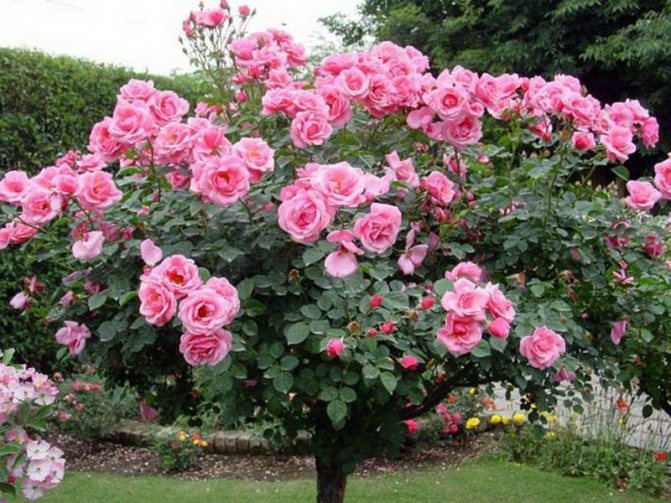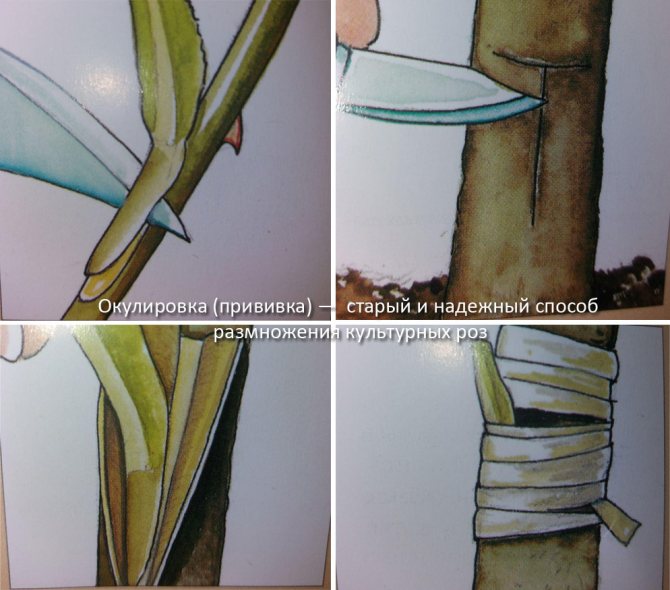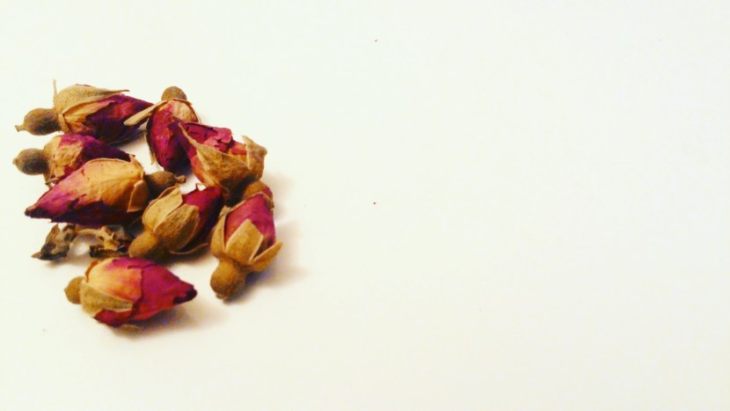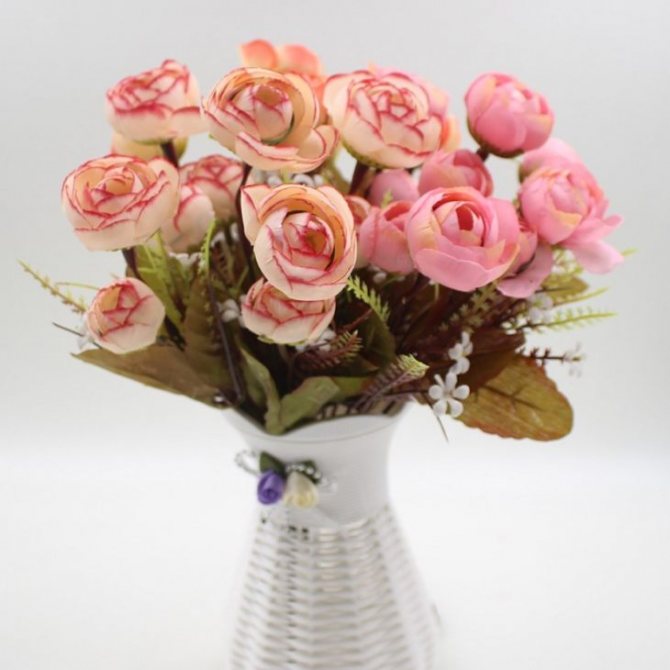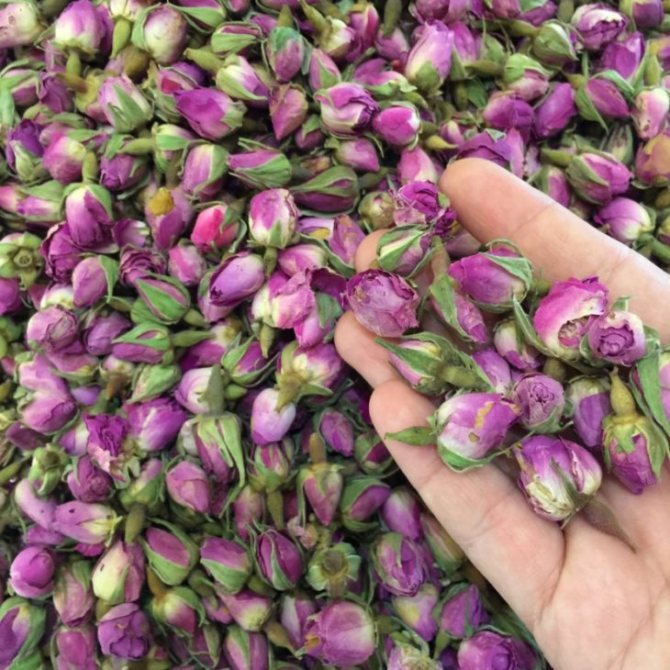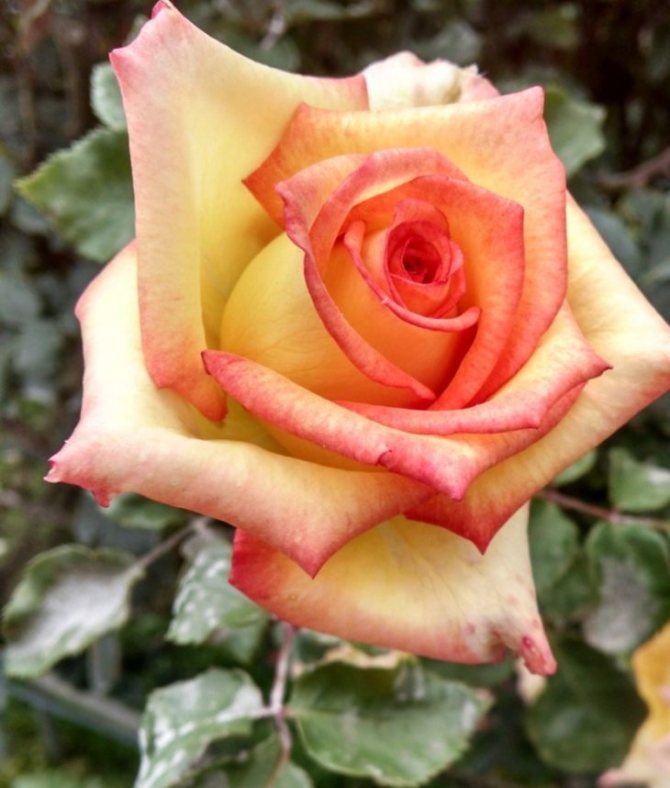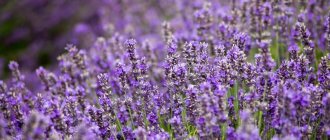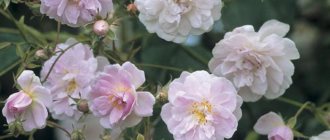
Popular hybrid tea roses delight people in almost every private garden, they are famous for their enchanting aroma, beautiful bud shape, and amaze with a variety of colors. Possessing such a magical flower, many summer residents do not know how to prune and care for the bush at all, which quickly affects the state of ornamental plantings.
Selection of seedlings and planting sites
The family of roses are capricious plants and require a special approach. With proper care, hybrid tea roses are capable of producing up to 6-7 buds on each peduncle and delight with their fragrant flowering.
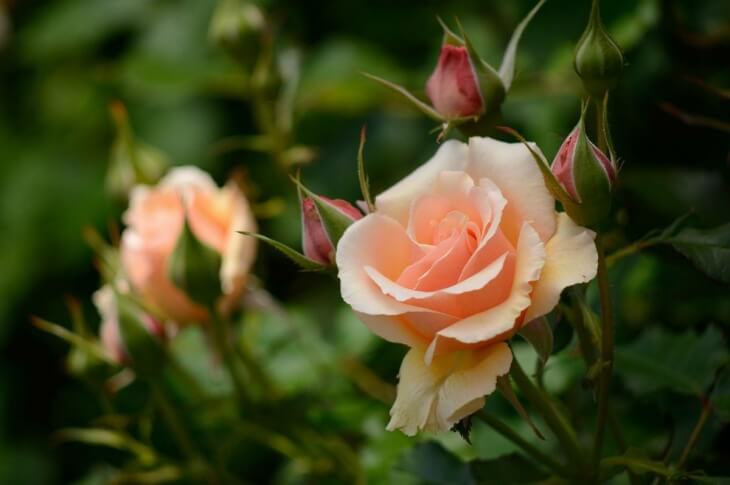

Roses are very moody creatures
The place for planting a hybrid tea rose should be sunny and protected from strong winds, the plants do not like drafts. It is good if the rose bushes are located near buildings or higher bushes. It is not advisable to plant roses close to other rosaceous plants: raspberries, mountain ash, cherries or pears.
The soil should be non-clayey, slightly acidic, loose and well fertilized. It is better to plant roses in spring, so that the plant has time to take root before wintering. Therefore, it is necessary to fertilize the soil at the end of autumn. To do this, you need to add humus and cow dung to the ground.
Particular attention should be paid to the choice of planting material. In addition to color and aroma, it is worth deciding which variety is more suitable for your region. And also what size the rose bush is supposed to reach. The height of bushes of hybrid tea roses can be from 50 to 150 cm.
When buying seedlings, be guided by the following points:
- The root system must be well developed and branched
- The presence of two or more stems, with a diameter of 6-7 mm
- The kidneys should be at rest
- Lack of pale and too long shoots
- The stems must be ripe, firm and green in color.
It is best to purchase seedlings in specialized stores or from trusted and reliable sellers.
Lilac and blue varieties
Blue Moon variety
Translated into Russian, the flower is called "Blue Moon". The variety was created in Germany in 1964.


- Bush 90 - 120 cm high, neat, practically no thorns
- Leaves are dark green, very shiny
- Petal color: lilac, does not fade, turns pink in the shade, blue in the sun
- Flowers 10-13 cm in diameter, large, double, up to 36-40 petals
- The aroma is strong, intense
- Disease resistance is average, it is necessary to spray against powdery mildew, is not afraid of rains
- Winter hardiness is high, but it is advisable to cover
- Grown for cutting, has a long stem.
Variety Charles de Gaull (Charles De Gaull)
The variety was created and dedicated to the songs of Mireille Mathieu in 1975, which Charles de Gaulle loved very much. At her request, he became the godfather of her younger brother.
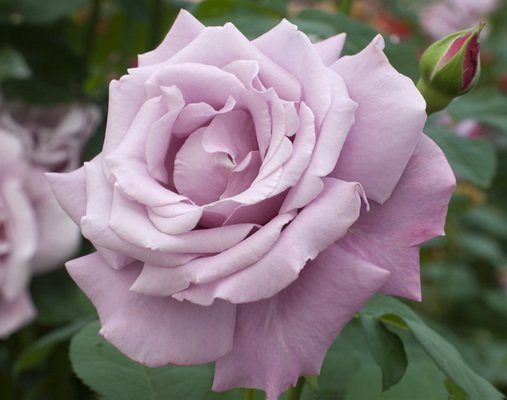

- Bush up to 1.2 meters high, erect, with long thorns
- Leaves are dark green, glossy
- Petal color: lavender-colored petals, when blooming become bluish-lilac
- Flowers with a diameter of 13-14 cm, goblet, double, up to 40 petals, wavy edges
- Strong aroma with notes of citrus and verbena
- Disease resistance is high, but preventive spraying is needed
- High winter hardiness, does not require shelter
- Grown for cutting and for bouquets, it belongs to especially valuable varieties.
Blue Nile cultivar
Created in France in 1981, in the same year received the Bagatelle gold medal as a new variety at the international competition in Paris.
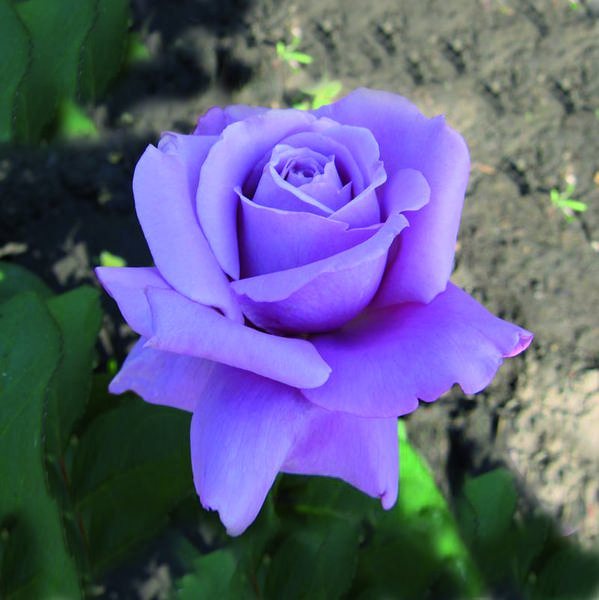

- Bush up to 150 cm high, prickly
- Leaves are dark green, glossy
- Petal color: bluish lilac
- Flowers up to 12 cm in diameter, terry, up to 35 petals
- The aroma is pleasant, with notes of citrus and tea, the smell attracts bronzes (minus)
- Disease resistance average
- Winter hardiness is above average, requires shelter
- Grown for cutting and garden decoration.
Planting hybrid tea roses
Prepare roses for planting in advance
You can buy a seedling in advance, at the beginning of March. It must be stored in damp soil or sand in a cool room - basement, refrigerator. In this state of dormancy, the seedling will safely wait for the moment of planting in open ground. The time for disembarkation is from May to June, before the onset of extreme heat. The earth should be warmed up to +12 degrees Celsius.
Before planting, the roots of the seedling are recommended to be pruned a little and soaked in water for 2 hours so that they are filled with moisture. Better yet, place the plant completely in water.
Dig a hole so deep that the roots fit freely into it and do not bend, about 50-60 cm. Half of the hole must be filled with a mixture of garden soil, organic fertilizers (cow dung, peat, humus) and sand, in equal proportions. If the soil is dry, water it with 2 liters of water.
Further, a plant is lowered into the hole and covered with earth. The thickening on the seedling is the grafting site, which must be buried in the ground by 2-3 cm. After planting, the ground must be carefully tamped and an earthen roller must be built around the seedling so that during irrigation water flows directly to the roots.
The planting process ends with hilling the plant in order to protect the lower buds from unfavorable climatic conditions.
Reproduction of roses in the summer in the open field
Standard roses: planting and care
At home, hybrid roses can be propagated by grafting and cuttings. Gardeners prefer to plant roses in the summer from late July to early September. During this time, the bud grows together with the stock, and will start growing only the next year.
It's easy to grow roses at home from cuttings correctly. Can be propagated by cuttings when the stems are in flowering stage. Cuttings are chosen from the middle of the stem, not too thick or too thin. Cut into pieces with 2-3 buds. Cut obliquely from the bottom under the bud, from above - straight, 2 cm above the upper bud, removing the leaves by a third. Seedlings can be planted in the shade under trees to keep out direct sunlight. Cover with glass or plastic jars on top. Watering is carried out between shelters.


Propagation of roses by cuttings
Watering
Hybrid tea roses love rare but abundant watering. A young bush requires more frequent watering. At first, every 2-3 days, but you should not fill it too much. 3-5 liters of water will be enough. Then watering can be done once a week, according to the degree of drying of the soil.


When buds began to appear, you need to water the roses more often.
Most plants need watering during bud formation and active flowering. With a lack of moisture, the shoots develop poorly, the flowers become small and lose their beauty.
An adult plant needs about 10 liters of water for one watering. Roses love rain and melt water. The water from the tap does not really like the flower, because it contains salt impurities. You need to water with a thin stream so as not to damage the roots. You should also avoid getting water on the leaves and buds. This can lead to the development of fungal diseases.
On too hot days, roses should be watered with lukewarm water and do this in the evening. If the summer is not very hot, watering can be done every 10-14 days.
In the fall, the hybrid tea rose needs almost no watering, only if there is no rain at all.
The main mistakes when growing
| Errors | Right |
| Wrong landing site | The rose is light-requiring, grows poorly in the wind, does not like excessive watering |
| Incorrect fit | The grafting site should be 3-4 cm below the soil surface. With a strong deepening, the root collar can rot |
| Incorrect summer pruning | It is necessary to remove faded flowers |
| Improper watering | A bush requires 5-10 liters of water 1 time in 5-7 days in the evening |
| Wrong feeding | During the budding period, potash and phosphorus fertilizers are needed. |
| Improper preparation for winter | It is necessary to remove all the leaves, cover only after the first frost |
Fertilizing roses
Timely and correct feeding is a very important process for the health of rose bushes. The combination of organic and mineral fertilizers has a good effect. Organic matter improves the composition of the soil and nourishes the plant, while mineral dressing enhances growth and flowering.
In the first year, the rose does not need root feeding, since fertilizers were introduced into the hole during planting. But in the fall, you can do top dressing on the leaves (1 tablespoon of potassium sulfate per 8 liters of water). This will help the young plant grow stronger and prepare for wintering.
The first dressing is applied after pruning the roses in the spring to stimulate growth. For this, special dry mineral fertilizers are used, which can be purchased in stores. After abundant watering, fertilizers are scattered around the bush, stepping back 10-12 cm from the center. Then they are sealed and well watered again.
Fertilization is very useful for roses.
After a week, organic fertilizers must be applied. Place about 5 liters of rotted mullein around the bush, loosen it with the ground and water.
At the time of the appearance of the ovary of buds, roses again need feeding. A good remedy would be organic - an infusion of chicken manure or cow dung. The infusion should be prepared in advance. Take 1 liter of manure in 8 liters of water and let it brew for two weeks. The resulting fertilizer is diluted 1: 5 with water and watered.
In the same period, foliar feeding should be carried out with an infusion of wood ash or a weak solution of nitrate.
Before flowering, store-bought mineral fertilizers should be applied. During the active color of the rose, you do not need to fertilize.
The last time the roses are fertilized is in September. In this case, organic fertilizers are used.
If the roses look healthy, actively and bloom for a long time, then only organic fertilizing can be applied so as not to saline the soil.
Multicolored varieties
Hokus Pokus cultivar
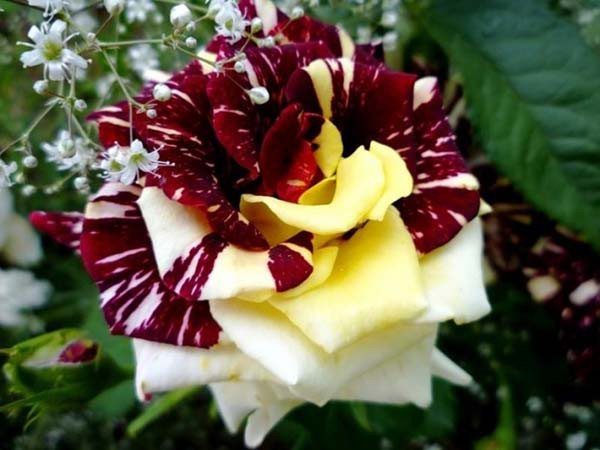

- Bush up to 75-80 cm high, branched, there are thorns
- Leaves are green, glossy
- The color of the petals: on a dark red color, golden streaks, on one bush there can be flowers of different colors, the same flowers, there are no
- Flowers up to 7 cm in diameter, terry
- Weak aroma
- Disease resistance average
- Winter hardiness is weak, requires shelter
- Grown for cutting, worth up to 16 days, good for curbs
Satin variety
- Bush 70-90 cm high
- Leaves are dark green, matte
- Petal color: bright crimson with white stripes
- Flowers with a diameter of 8-10 cm, goblet, double, up to 45 petals
- Light aroma
- Medium disease resistance, low rain resistance
- Good winter hardiness, does not require shelter
- Grown for flower gardens, landscape design
This type of roses requires careful care and individual farming techniques, depending on the variety.
Sateen grade (Satin)
- Bush 70-90 cm high
- Leaves are dark green, matte
- Petal color: bright crimson with white stripes
- Flowers with a diameter of 8-10 cm, goblet, double, up to 45 petals
- Light aroma
- Medium disease resistance, low rain resistance
- Good winter hardiness, does not require shelter
- Grown for flower gardens, landscape design
This type of roses requires careful care and individual farming techniques, depending on the variety.
Pest and disease control
A common disease of the hybrid tea rose is powdery mildew. In order to prevent disease and for prophylaxis, plants are treated with baking soda. To do this, 40 g of soda is diluted in 1 liter of water and the leaves are sprayed with this solution. Processing is carried out in the spring, when foliage appears. This is done 2 times a week and continues until the end of June.
Expert opinion
Yulia Yurievna
I have a large garden and vegetable garden, several greenhouses. I love modern methods of plant cultivation and soil mulching, I share my experience.
Ask a Question
When affected by powdery mildew, a white or grayish coating appears on all aerial organs. The shoots are compacted and bent. The disease often appears due to the abuse of nitrogen-containing fertilizers, lack of light or excessive watering. In addition, if there is not enough calcium in the soil, or there was a sharp decrease in temperature, then the immunity of the tea rose decreases, and this also contributes to the development of the fungus. Topaz, Fundazol are used as a treatment.
If the opening buds have orange dust, then it is rust. Orangeish convex spots are formed on the leaves. Towards the end of summer, they turn black. As a preventive measure, do not allow the accumulation of litter under the flower. The soil should be mulched. A rose, and the earth around it is sprayed with iron vitriol. It is worth carrying out the procedure in March. When the buds have already blossomed, it is worth treating the plant with Ordan. Infected areas should be removed and burned.
Black spot may develop towards the end of July. It is characterized not only by spots, but also by falling foliage. Sometimes plants that prematurely shed their leaves begin to grow them again. As a result, they do not have time to prepare for the winter, die or get very sick in the next season. The most vulnerable are roses that grow too densely and for which a sanitizing image was not carried out in time. The treatment is the same as for rust. Also, you can use the drug Skor for both prevention and treatment.
Gray rot affects buds and young branches. A grayish fluffy coating forms on them. It is better not to place a rose garden near strawberries, as they are very susceptible to this disease. For prevention, you should not thicken the plantings and water in the evening if it is not warm enough outside. Treat like powdery mildew.
Roses are often invaded by green aphids. You can fight this pest with a prepared solution. In 10 liters of water, grate a piece of ordinary laundry soap and add a few sprigs of wormwood.
Boil the ingredients for 15 minutes, let stand and strain. The resulting solution must be treated with leaves and stems of plants. Repeat the procedure in a week.
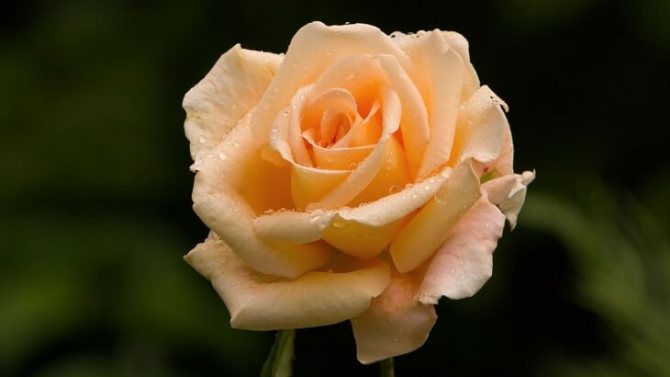

Roses very often become the favorites of pests.
If the pest does not retreat, then you can use special poisons that are on sale.
Subcrusts and fertilizers for roses
Organics for roses - preserving health. Substances released by bacteria and chemical elements are well absorbed by plants and are contained in slurry. You need to apply fertilizer 2-4 times a month, depending on the composition of the soil. Don't be afraid to oversaturate the soil, roses are responsive to organic fertilizers.
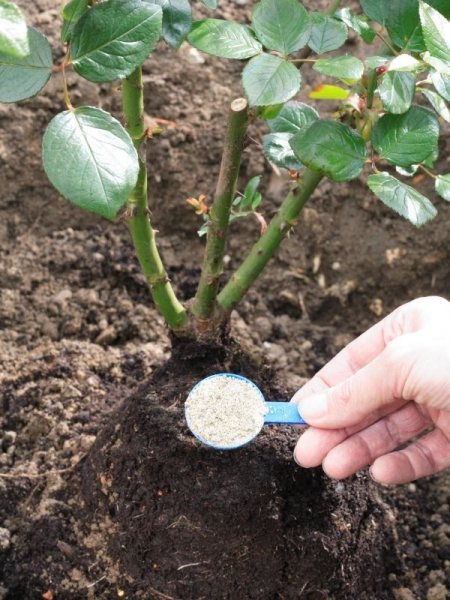

To prepare the slurry, do the following:
- pour the mullein with water in a ratio of 1x3;
- add 15 g to a bucket of water superphosphate, potassium sulfate;
- keep the mixture in a barrel for 12 days;
- dilute the concentrated composition with water (1x10);
- apply fertilizer into the grooves around the circumference of the bushes, stepping back from the roots about 25-30 cm;
- after the mullein is absorbed into the soil, fill the grooves with sand, peat, and top with earth;
- after 1-2 days, loosen the soil well.
Pruning roses
Timely pruning plays an important role in the proper care of hybrid tea roses. It can be of several types:
Strong pruning. More than half of the shoot is cut off so that 3-4 buds remain. This promotes the formation of larger flowers, but in smaller quantities. Flowering starts later than usual.
Weak pruning. The damaged or frozen top of the shoot is removed. The plant begins to bloom early, more flowers are formed. But the flowers themselves will be smaller.
Spring pruning is most important. They do it when the buds have reached sizes from 0.5 to about 8 cm.In low-growing varieties, 3-4 buds should be left and the shoot length is 15-20 cm.Up to 8 buds are left for tall plants, the shoot length is 30 cm.
Summer pruning. Carried out after flowering. Wilted flowers with a small part of the shoot are removed. At the same time, roses do not give energy to the formation of fruits, which will ensure abundant flowering in the future.
Autumn pruning. It is made before preparation for wintering. Unripe and damaged shoots are cut out. Pruning strongly is not recommended, since during harsh winters, branches can freeze deeply, which can greatly harm the plant.
Don't forget about autumn pruning
After the pruning process, all removed shoots and leaves must be removed away from the bushes or burned. They may contain pathogens of plant diseases.
Description of the main features of the varieties
Roses are made up of countless varieties. The exact number is unknown.
- Peer Gynt is an early flowering variety, it has a peculiarity - weak immunity and a tendency to infection with powdery mildew. Size - ninety cm. Quite neat, with a dense crown, the trunk is strewn with sharp and thin spines. The buds are arranged singly, large in size with a lovely golden yellow color. The petals of flowers with a delicate odor turn pinkish before the end of the color period.
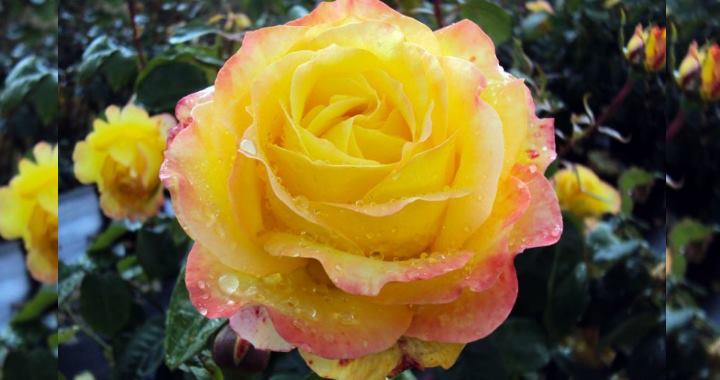

- Dame de Kerr - frost-resistant, with a strong immune system. The size is ninety centimeters. Reddish - crimson fluffy flowers are twelve cm across. The smell is weak, and the flowers themselves are in the shape of a bowl and elongated. Good bouquets come from culture.
Lucky Peace is famous among flower growers. Perfect configuration of flowers with different colors on each side. The lower part is orange-red, the upper part is pink-apricot. The size of the bush is small - eighty cm. Diametrically the flowers reach ten to twelve cm, and they are very fluffy and terry (around fifty petals).
- Alexander is an upright trunk, its size varies from one hundred to one hundred and fifty centimeters. Semi-double, brightly seasoned red flowers are large, diametrically - twelve cm. The fragrance is almost imperceptible.
- Prima Ballerina is a flower bed rose, very famous. Upright meter stem. The aroma is very pleasant. Large buds of classical configuration in the form of a cone. There is a feature - weak immunity and a tendency to infection with powdery mildew.
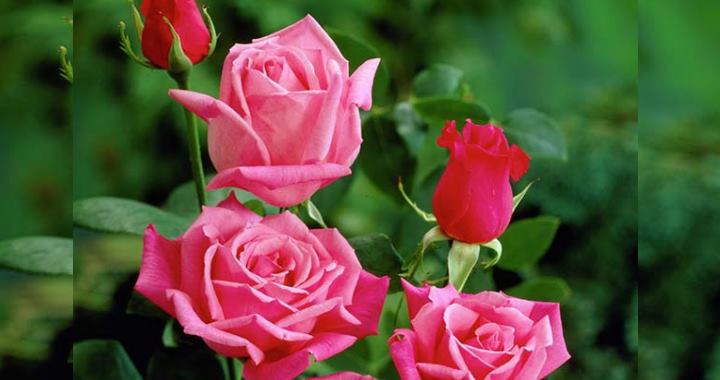

- La France is a winter-hardy variety, distinguished by the color range of its petals. The top is pink-silver and the bottom is hot pink. In diameter, densely double flowers (sixty petals) grow up to ten cm. Very strong aroma. Often sick with fungal diseases.
- The red varieties are the most famous. Burgundy and red roses are considered a symbol of unbridled passion, heartfelt affection. Frequent settlers of front gardens. Very varied.
- Mr. Lincoln - the compact bud is formed by velvety petals of a dark red hue.
Madonna is a variation with the highest decorative properties. Velvety inflorescences are distinguished by a dark color.
- Red intuition is a strong culture. The color scheme is red, with darkish stripes and spots. You can count thirty-one to thirty-nine petals. On each branch one flower, in the form of a glass, is inflated in the central part. The flowering time is long. There are practically no thorns, the leaves are semi-glossy.
Growing features


Hybrid tea roses are created by crossing and breeding based on tea roses. The latter are characterized by high aesthetic qualities - multiple and abundant flowering, beautiful shape and large size of the flower, pleasant fragrance.
But they are too delicate and therefore sensitive to weather factors and diseases. Hybrid tea roses are devoid of these disadvantages.
For example, crossing with a remontant rose, and this is how the first hybrid was obtained, strengthened the wood and increased the winter hardiness of the plant. But do not think that hybrid tea roses, like any weed, grow successfully in any conditions. The culture is extremely demanding in terms of care and adherence to cultivation technology at all stages - from soil preparation to autumn pruning and warming for the winter.




